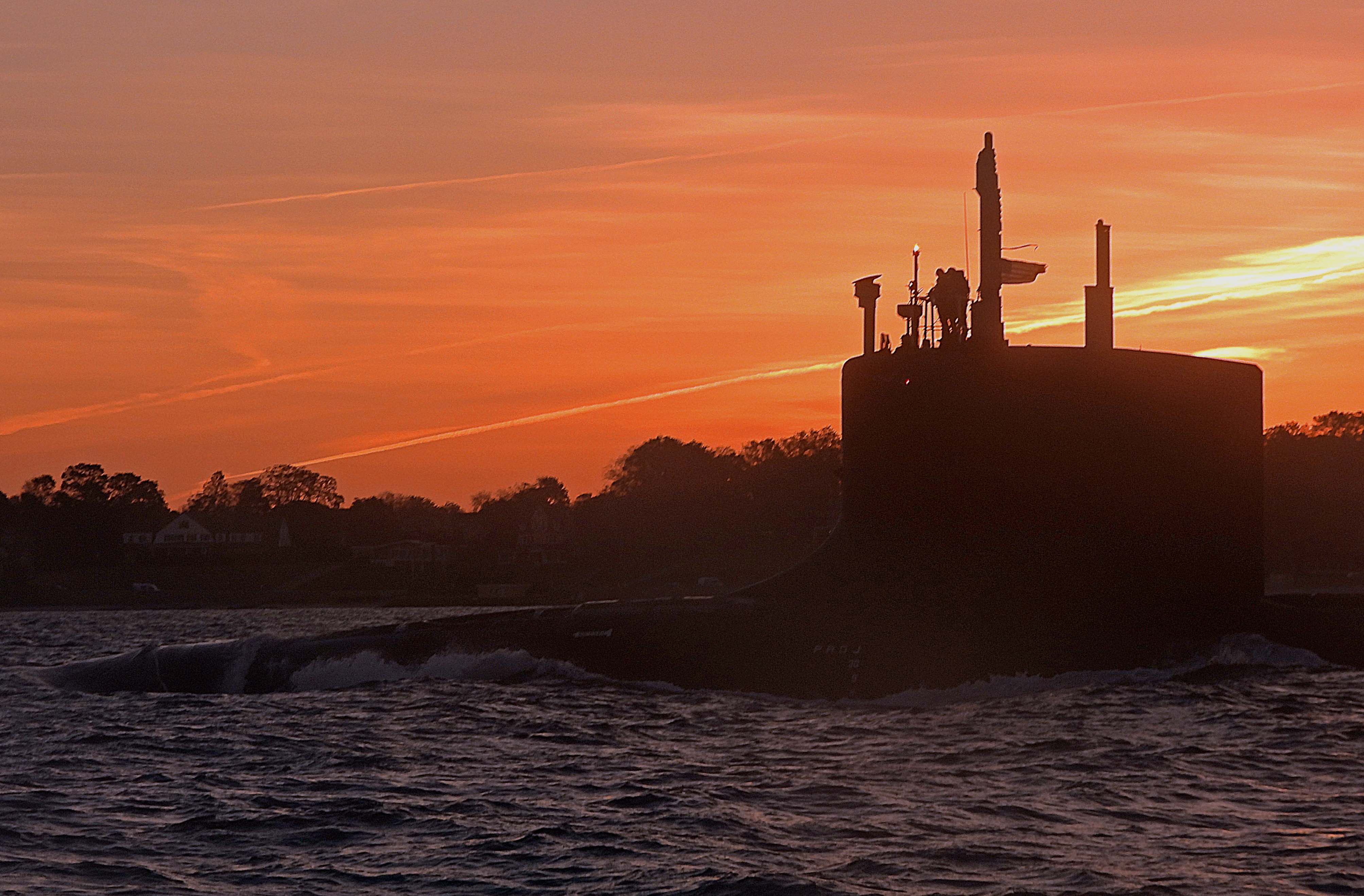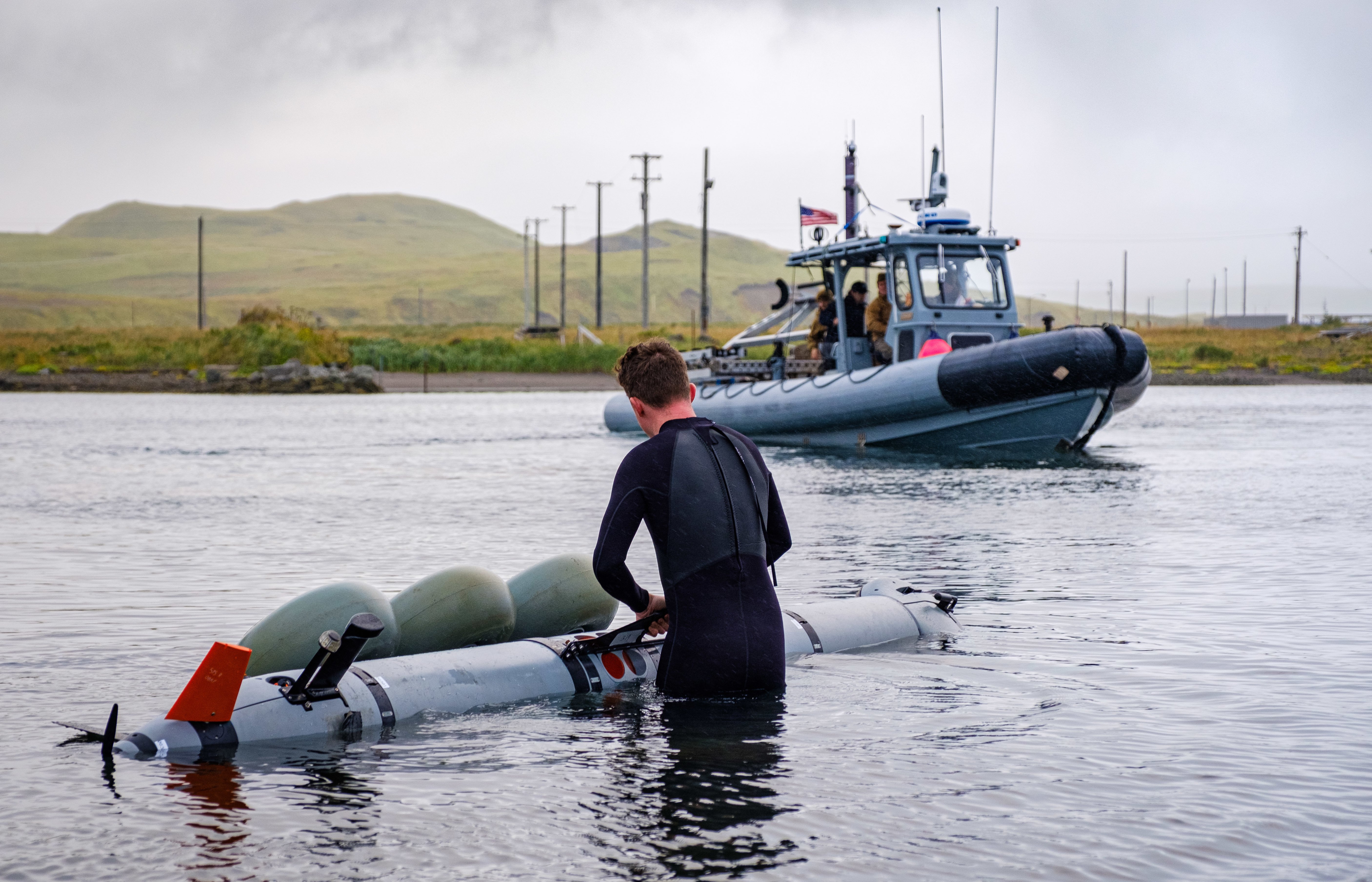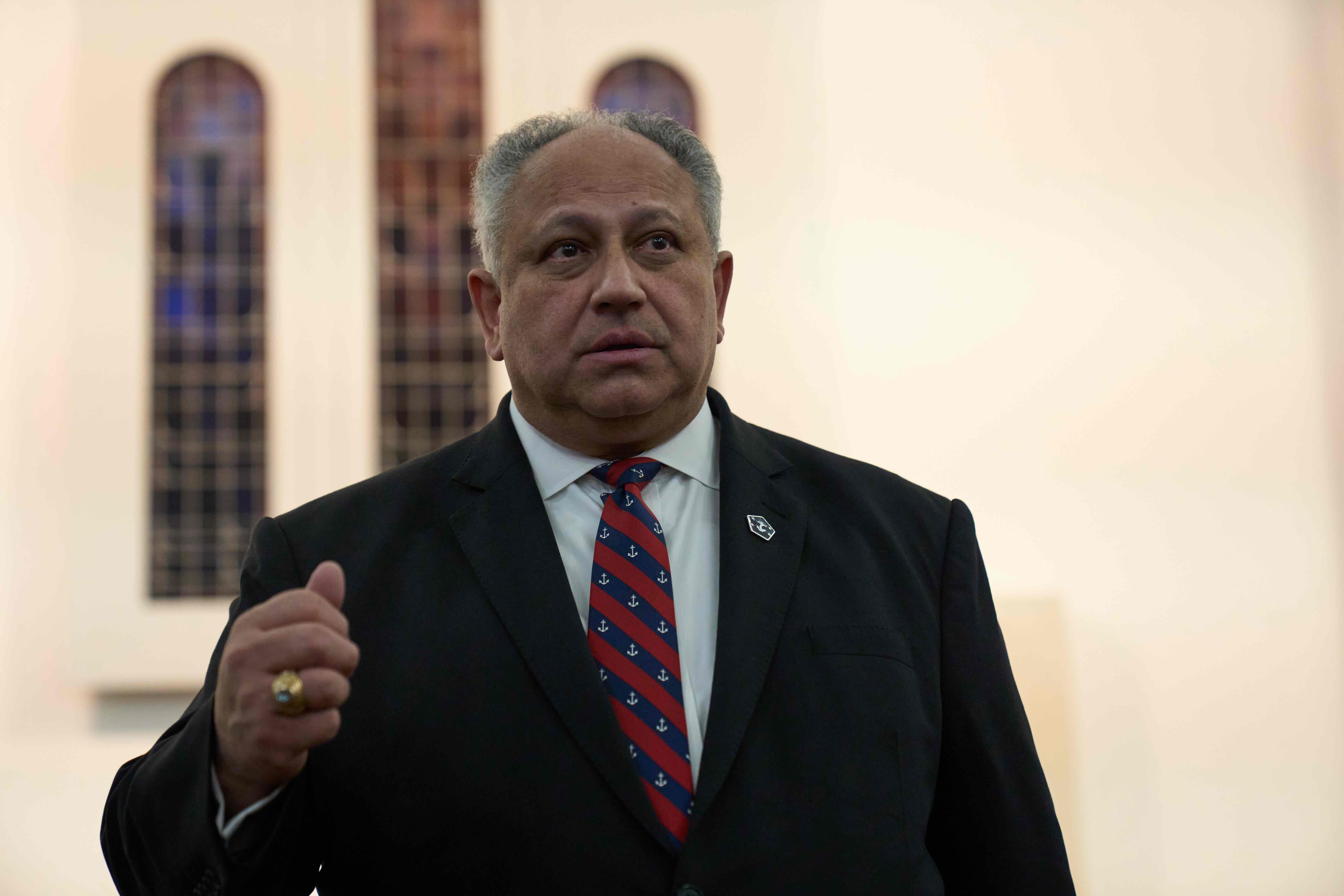
ARLINGTON, Va. – In the near future, the U.S. nuclear attack submarine fleet will be able to launch and recover an underwater robot from a torpedo tube, Navy officials said this week.
The torpedo-sized Razorback — designed to extend the awareness of a submarine— has been in testing on the Navy’s attack boats for more than a year but requires a dry deck shelter and divers to recover the 600-pound UUV. The current procedure has blunted the utility of the system, Submarine Force commander Vice Adm. Bill Houston said on Tuesday at the Naval Submarine League’s annual symposium
“The Medium UUV can go on any one of our submarines. That is a priority for us. We have no problem launching UUVs. That’s easy. The recovery part has been the critical aspect,” Houston said at the Naval Submarine League’s annual symposium.
The Navy tested a system earlier this year to recover the Medium UUV via torpedo tube and is close to deploying the system in the “very near future,” said Rear. Adm. Doug Perry, the director of submarine warfare for the Office of Chief of Naval Operations (OPNAV N97).
“While the submarine is moving, the UUV has to find that torpedo tube and drive in,” Perry told reporters when describing the recovery process.
“We have the system working. We haven’t fielded that at the fleet level yet. We expect in the very near future we will have that system operational.”
The existing Razorback UUVs are based on the Remus 600 series of underwater robots built by HII, Rear Adm. Casey Moton, the program executive officer for unmanned and small combatants said on Wednesday.
The Navy is combining the needs of the explosive ordnance disposal community and the attack boat fleet under a contract with Leidos and L3 Harris, Moton said.
“They are developing and building systems based on a single UUV designed to meet the unique requirements for both the Navy’s attack submarine force and the EOD community,” he said.
Leidos and L3 Harris are working on a $358 million contract to develop systems for the MUUV for both communities based around the REMUS 600 design.

While the outer lines of the UUVs will be the same, the payloads and sensors on the EOD and attack boat UUVs will be very different and tailored to the individual missions, USNI News understands.
The planned Viperfish variant will replace the MK-18 Mod 2 Kingfish mine countermeasures UUV to search for underwater mines, Moton said.
“The new UUV capabilities will allow the EOD force to conduct longer duration missions, cover more ocean area and do so faster, which enables the vehicles to get into deeper waters and improves the overall effectiveness of MCM operations in austere environments,” Moton said.
For attack boats, “the team will leverage the work done for the existing Razorbacks UUVs, which were designed to operate from a dry deck shelter or from a craft of opportunity. The new Razorback vehicle will be fully integrated and to accomplish this feat, torpedo tube launch and recovery capability will be integrated into the Razorback UUV,” Moton said.
“When this … capability is deployed, every SSN will have the ability to serve as a UUV mothership.”
The promise of MUUVs is to act as sensors for attack submarines to expand what they can detect underwater. While battery life has improved, the MUUVs are still limited in how long they can operate without recharging and the ability to take the UUV aboard a submarine for charging and maintenance is key to the practical operation of the system.
The Navy began testing the Razorbacks with submarines last year, with nine Razorbacks assigned to the Unmanned Underwater Vehicle Squadron-1 (UUVRON-1).
In July, UUVRON-1 was elevated to a major command, which now reports to the commander of Submarine Force, U.S. Pacific Fleet Rear Adm. Jeffery Jablon.





